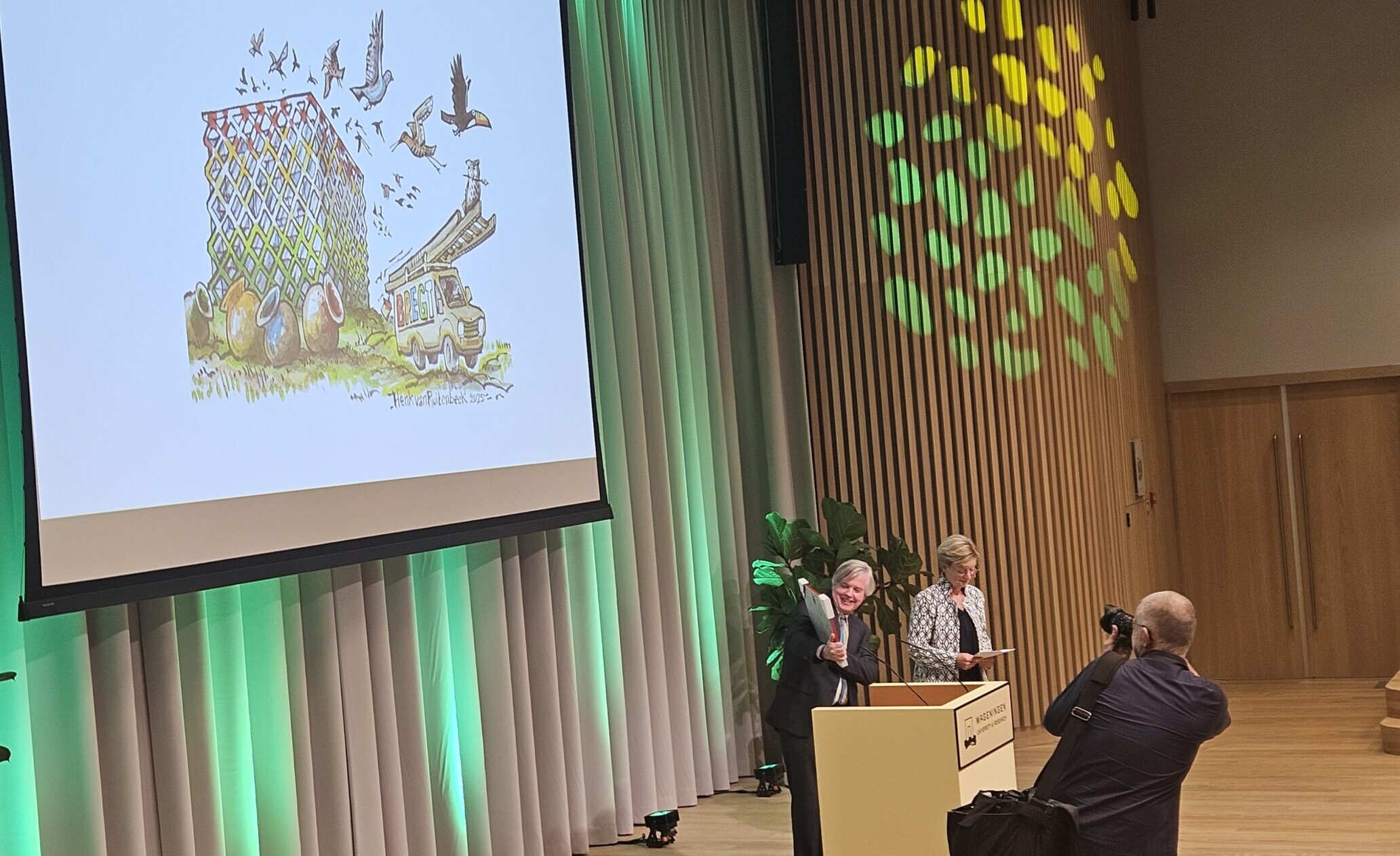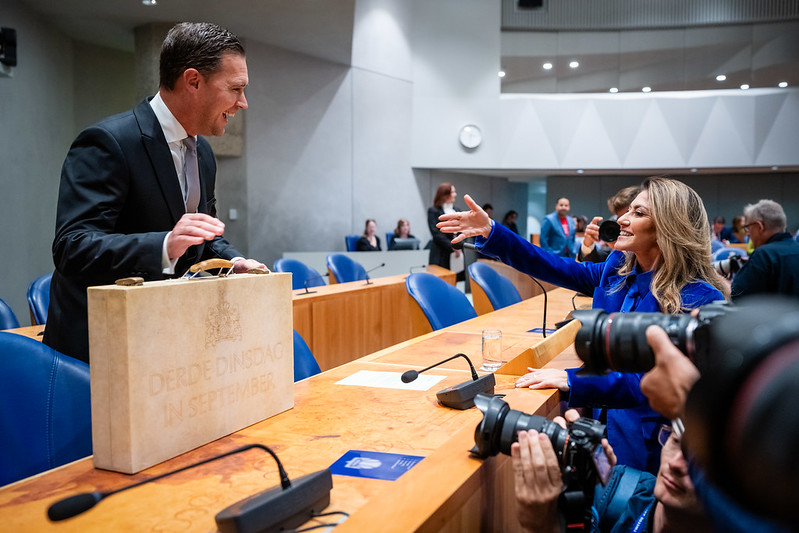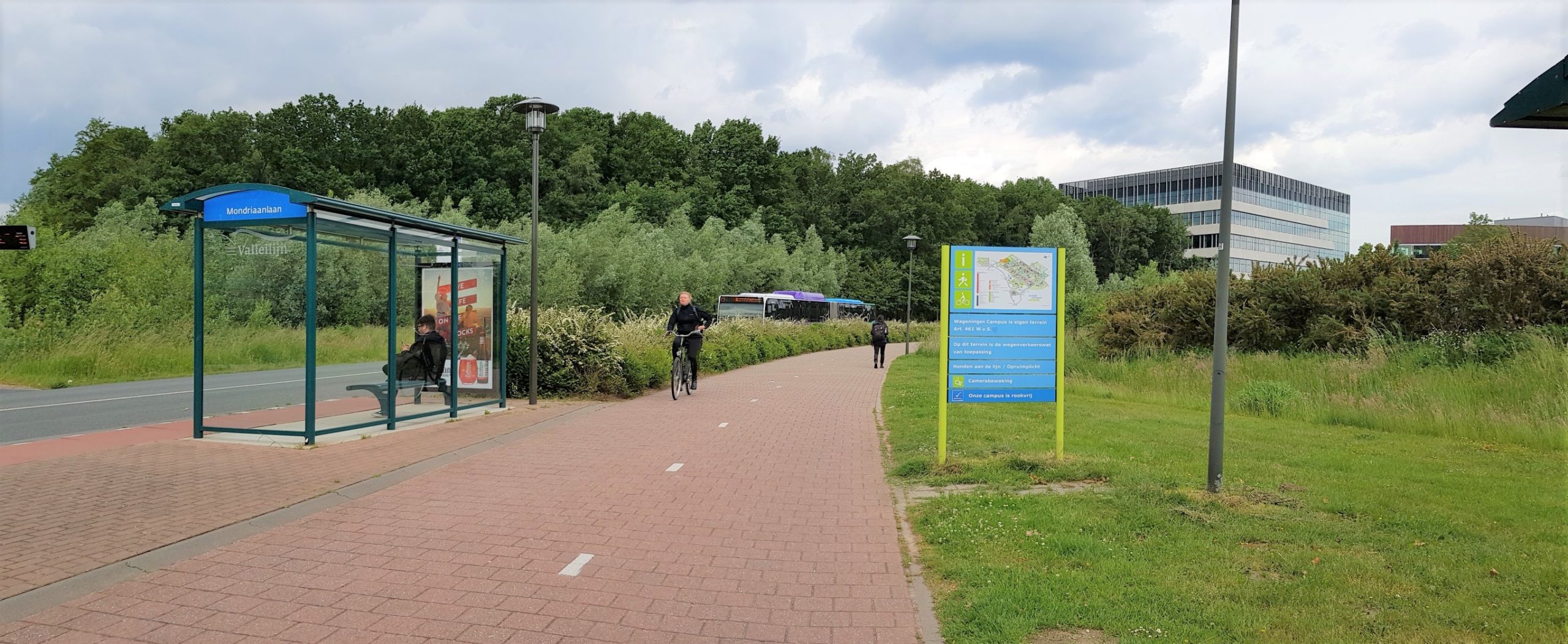The underground bunker is the temporary setting for the Research Methodologies for Plant Sciences course. BSc student of Plant Sciences Mats Bours and his course mates have been working here for about three weeks. ‘It’s sexy research,’ he says as he inspects the rye plants in his nursery ‘greenhouse’. But he’s a bit disappointed with the yield.
‘We expected more from the Martian soil with poo,’ he explains, ‘what with the extra nitrogen that is therefore present in the soil.’ The greenhouse, an adapted Ikea cupboard, houses a few dozen pots containing rye growing in normal soil or a replica of Martian soil. The soil may or may not be fertilized with poo. Human poo, that is, from WUR staff in the AFSG department.
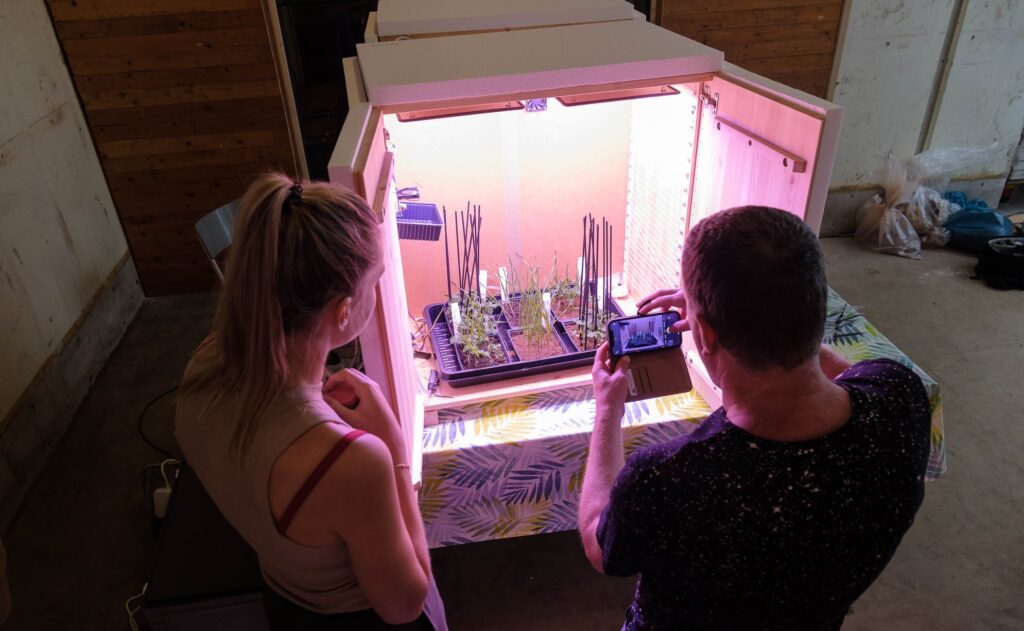
The trials are the latest development in ecologist Wieger Wamelink’s Mars research: growing crops in Martian soil enriched with faeces. The Wageningen researcher is renowned for his testing of Martian soil. He doesn’t actually mix turds into the soil. The liquid fraction of fermented poo is used, explains Bours. ‘Fermented to kill any E. coli bacteria.’
At heart, then, this is all about circularity. According to Wamelink, recycling would be essential on Mars, because the soil there is poor in nutrients. In the bunker, the students experiment with soils enriched with pee and poo. They are even practising pixel farming in one of the three greenhouses, with an experiment the students designed themselves.
The location is an additional challenge. The bunker on the former Saxony-Weimar military site is a remnant of the Cold War. This 1000 m2 two-storey monster served as a communication centre for military air traffic from 1974 but has been disused since 2000. Wamelink was offered the use of the bunker thanks to the Science Shop Wageningen.
Science Shop
The ‘shop’ is doing research for Stichting De Groene Bunker to find a long-term use for the bunker as a potential location for urban farming. This research has been supported by ACT (Academic Consultancy Training) students, and Wamelink’s Mars experiments are the first demonstration of a possible new use for the bunker.
For Wamelink, the bunker is heaven-sent. ‘It’s been clear to me from the start that if anyone lived on Mars it would have to be underground. Because of the radiation, you can’t live on the surface. A bunker is the nearest approximation we have to that situation,’ he explains. ‘This is really great. In a bunker like this, you find out what you’re up against when you go underground. There is no natural light, and it is cold and damp. So you have to cope with all that. This is not quite the same as doing research in a greenhouse in Wageningen.’
In a bunker like this, you find out what you’re up against when you go underground
The greenhouses have been adapted accordingly: the Ikea cupboards are wrapped in white polystyrene. LED panels simulate a diurnal rhythm and emit heat as well. Despite the bunker’s 12 degrees Celsius, the temperature in the greenhouse is 20 degrees and good for plant growth. A fan keeps the atmosphere right and a sensor measures and records CO2 levels.
For the students, the trial is over after more than three weeks. Wamelink will carry on until the ‘final harvest’ of rye and peas. Sometime in the coming months, Covid measures permitting, there will be an open day for the neighbourhood.

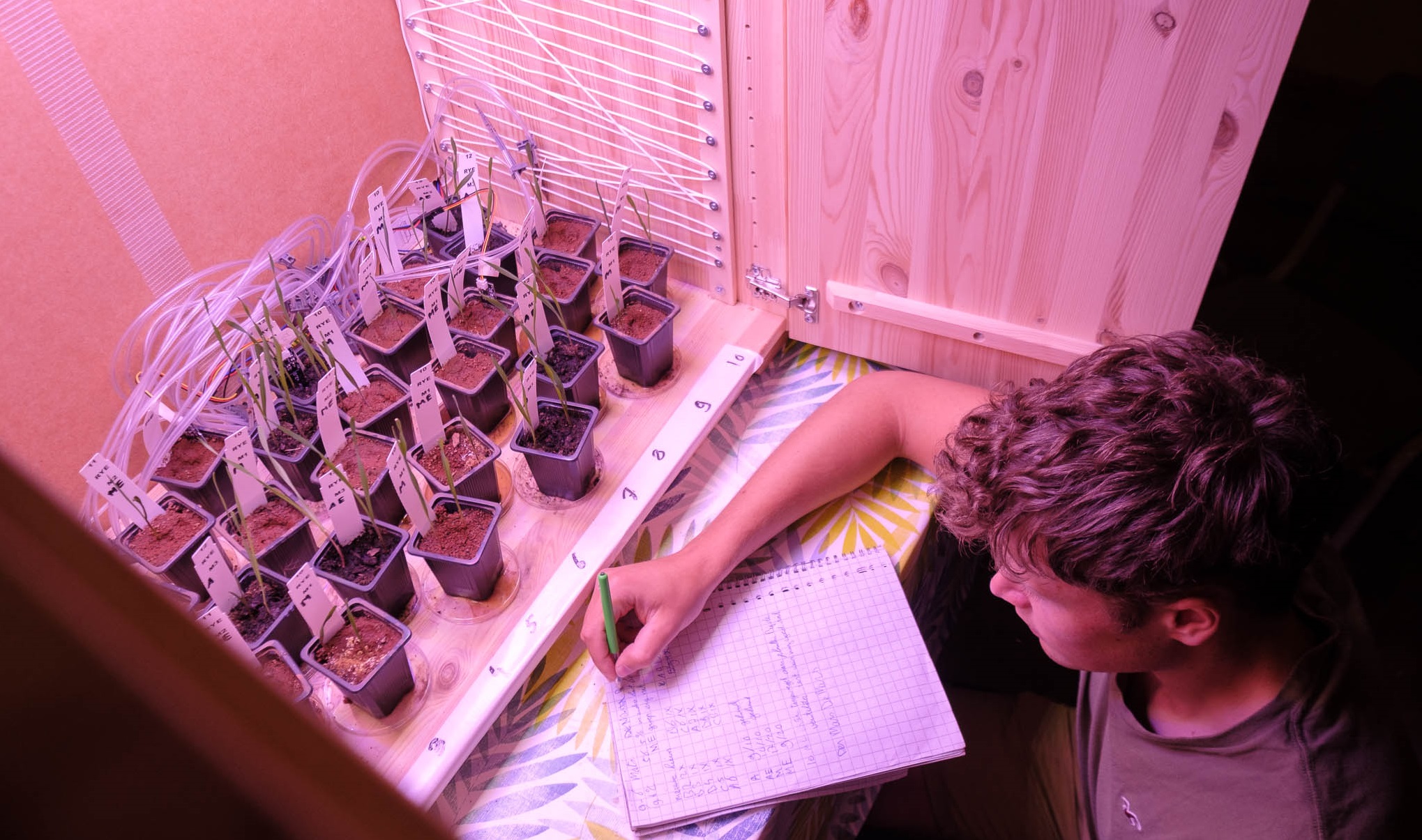 Photo Guy Ackermans
Photo Guy Ackermans 